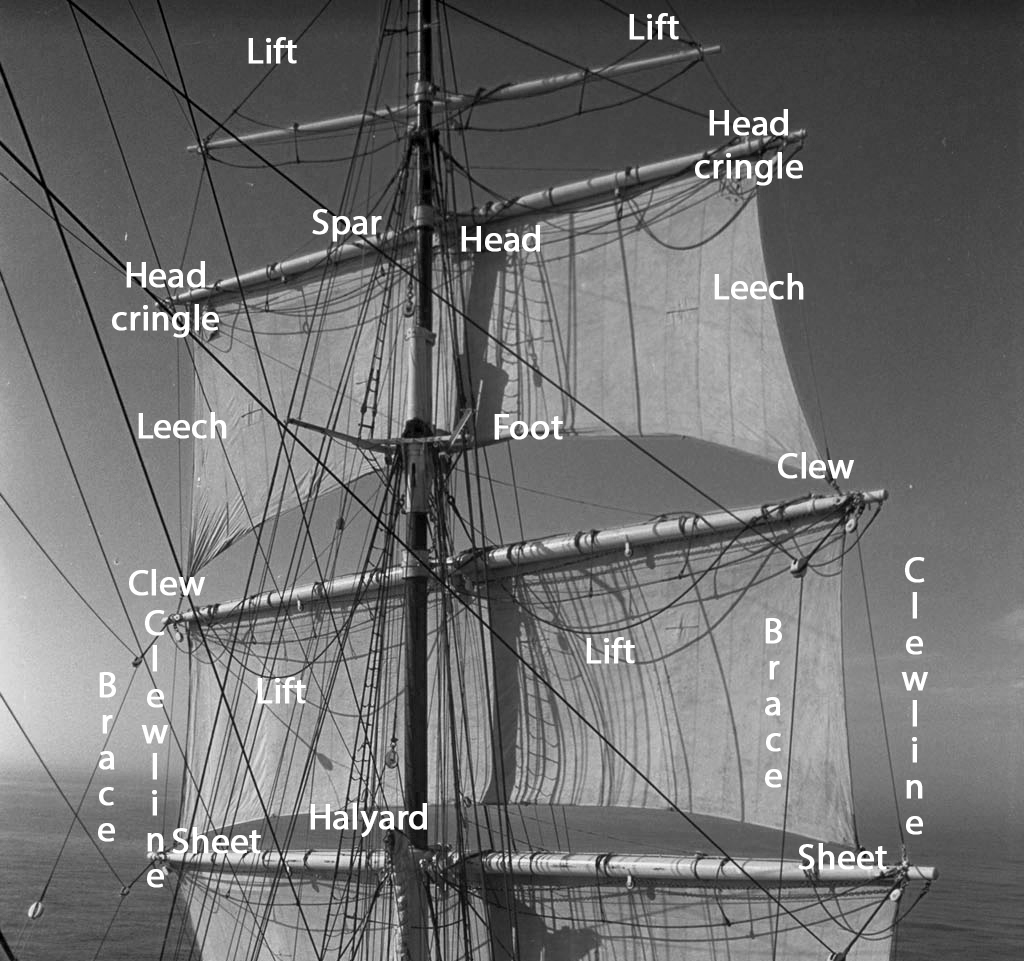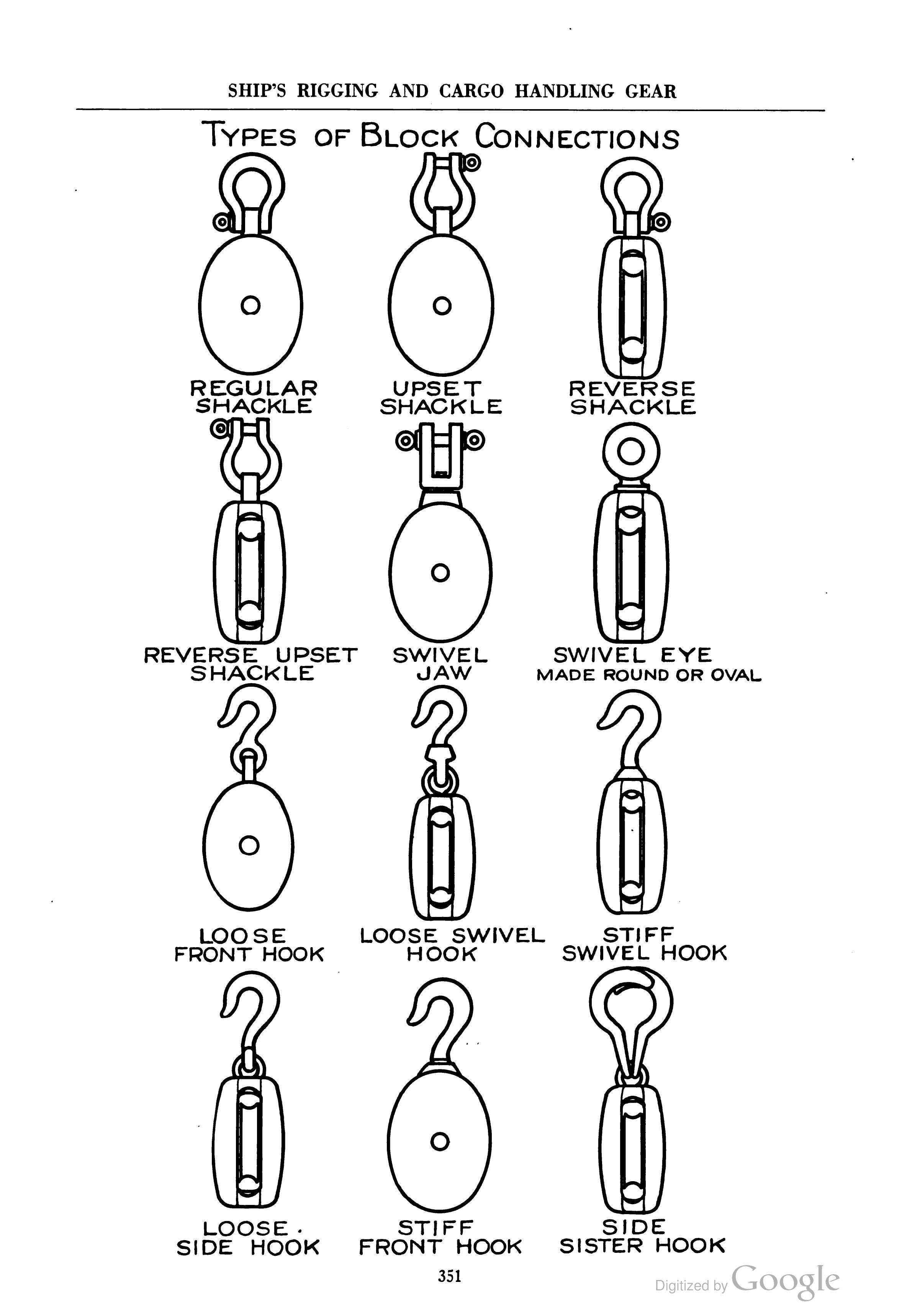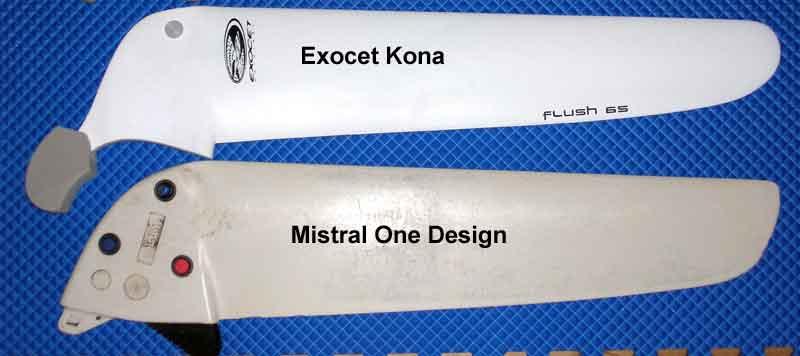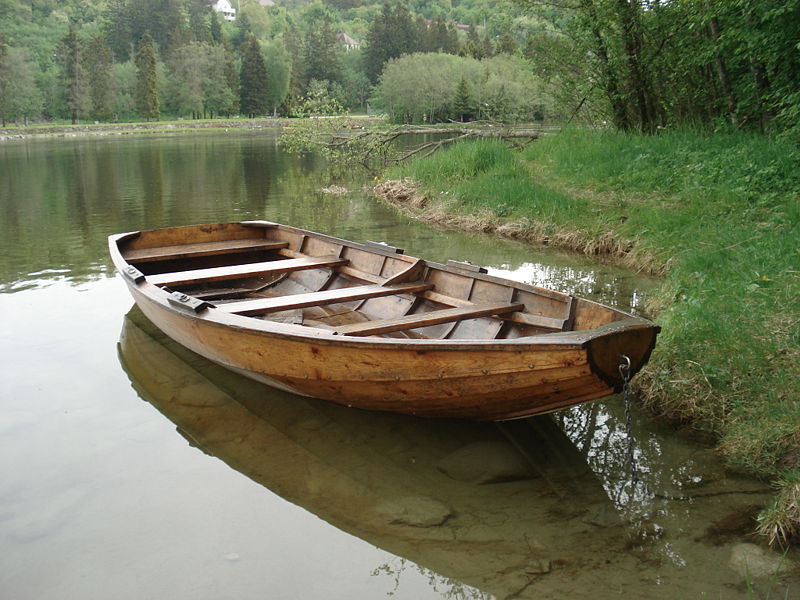|
Optimist (dinghy)
The Optimist is a small, single-handed sailing dinghy intended for use by young people up to the age of 15. The Optimist is one of the two most popular sailing dinghies in the world, with over 150,000 boats officially registered with the class and many more built but never registered. It is sailed in over 120 countries and it is one of only two sailboats as an International Class by World Sailing exclusively for sailors under 16. Origin The Optimist was designed in 1947 by American Clark Mills at the request of the Clearwater Florida Optimist service club following a proposal by Major Clifford McKay to offer low-cost sailing for young people. The Optimist Club ran a soap box derby, but wanted more than a single-day event. Thus they were looking for a low-cost equivalent for sailing. He designed a simple pram that could be built from two 4' x 8' sheets of plywood, and donated the plan to the Optimists. The design was slightly modified and introduced to Europe by Axel Damg ... [...More Info...] [...Related Items...] OR: [Wikipedia] [Google] [Baidu] |
Monohull
image:monohull.svg, right A monohull is a type of boat having only one hull (watercraft), hull, unlike multihulled boats which can have two or more individual hulls connected to one another. Fundamental concept Among the earliest hulls were simple logs, but these were generally unstable and tended to roll over easily. Hollowing out the logs into a dugout canoe doesn't help much unless the hollow section penetrates below the log's center of buoyancy, then a load carried low in the cavity actually stabilizes the craft. Adding weight or Sailing ballast, ballast to the bottom of the hull or as low as possible within the hull adds stability. Naval architects place the center of gravity substantially below the center of buoyancy; in most cases this can only be achieved by adding weight or ballast. The use of stones and other weights as ballast can be traced back to the Ancient Rome, Romans, Phoenicians and Vikings. Modern ships carry tons of ballast in order to maintain their stabil ... [...More Info...] [...Related Items...] OR: [Wikipedia] [Google] [Baidu] |
Parts Of A Sail
Sail components include the features that define a sail's shape and function, plus its constituent parts from which it is manufactured. A sail may be classified in a variety of ways, including by its orientation to the vessel (e.g. ''fore-and-aft'') and its shape, (e.g. ''(a)symmetrical'', ''triangular'', ''quadrilateral'', etc.). Sails are typically constructed out of flexible material that is shaped by various means, while in use, to offer an appropriate airfoil, according to the strength and apparent direction of the wind. A variety of features and fittings allow the sail to be attached to lines and spars. Whereas conventional sails form an airfoil with one layer of fabric, wingsails comprise a structure that has material on both sides to form an airfoil—much like a wing placed vertically on the vessel—and are beyond the scope of this article. Classifications Sails may be classified as either ''triangular'', which describes sails that either come to one point of suspen ... [...More Info...] [...Related Items...] OR: [Wikipedia] [Google] [Baidu] |
Rudder
A rudder is a primary control surface used to steer a ship, boat, submarine, hovercraft, aircraft, or other vehicle that moves through a fluid medium (generally aircraft, air or watercraft, water). On an aircraft the rudder is used primarily to counter adverse yaw and p-factor and is not the primary control used to turn the airplane. A rudder operates by redirecting the fluid past the hull (watercraft), hull or fuselage, thus imparting a turning or yaw (rotation), yawing motion to the craft. In basic form, a rudder is a flat plane or sheet of material attached with hinges to the craft's stern, tail, or after end. Often rudders are shaped so as to minimize Drag (physics), hydrodynamic or aerodynamic drag. On simple watercraft, a tiller—essentially, a stick or pole acting as a lever arm—may be attached to the top of the rudder to allow it to be turned by a helmsman. In larger vessels, cables, pushrods, or hydraulics may be used to link rudders to steering wheels. In typical air ... [...More Info...] [...Related Items...] OR: [Wikipedia] [Google] [Baidu] |
Fiberglass
Fiberglass (American English) or fibreglass (Commonwealth English) is a common type of fiber-reinforced plastic using glass fiber. The fibers may be randomly arranged, flattened into a sheet called a chopped strand mat, or woven into glass cloth. The plastic matrix may be a thermoset polymer matrix—most often based on thermosetting polymers such as epoxy, polyester resin, or vinyl ester resin—or a thermoplastic. Cheaper and more flexible than carbon fiber, it is stronger than many metals by weight, non- magnetic, non-conductive, transparent to electromagnetic radiation, can be molded into complex shapes, and is chemically inert under many circumstances. Applications include aircraft, boats, automobiles, bath tubs and enclosures, swimming pools, hot tubs, septic tanks, water tanks, roofing, pipes, cladding, orthopedic casts, surfboards, and external door skins. Other common names for fiberglass are glass-reinforced plastic (GRP), glass-fiber reinforced plastic (GFRP) or GF ... [...More Info...] [...Related Items...] OR: [Wikipedia] [Google] [Baidu] |
Stern
The stern is the back or aft-most part of a ship or boat, technically defined as the area built up over the sternpost, extending upwards from the counter rail to the taffrail. The stern lies opposite the bow, the foremost part of a ship. Originally, the term only referred to the aft port section of the ship, but eventually came to refer to the entire back of a vessel. The stern end of a ship is indicated with a white navigation light at night. Sterns on European and American wooden sailing ships began with two principal forms: the ''square'' or ''transom'' stern and the ''elliptical'', ''fantail'', or ''merchant'' stern, and were developed in that order. The hull sections of a sailing ship located before the stern were composed of a series of U-shaped rib-like frames set in a sloped or "cant" arrangement, with the last frame before the stern being called the ''fashion timber(s)'' or ''fashion piece(s)'', so called for "fashioning" the after part of the ship. This frame is d ... [...More Info...] [...Related Items...] OR: [Wikipedia] [Google] [Baidu] |
Bow (ship)
The bow () is the forward part of the hull of a ship or boat, the point that is usually most forward when the vessel is underway. The aft end of the boat is the stern. Prow may be used as a synonym for bow or it may mean the forward-most part of the bow above the waterline. Function A ship's bow should be designed to enable the hull to pass efficiently through the water. Bow shapes vary according to the speed of the boat, the seas or waterways being navigated, and the vessel's function. Where sea conditions are likely to promote pitching, it is useful if the bow provides reserve buoyancy; a flared bow (a raked stem with flared topsides) is ideal to reduce the amount of water shipped over the bow. Ideally, the bow should reduce the resistance and should be tall enough to prevent water from regularly washing over the top of it. Large commercial barges on inland waterways rarely meet big waves and may have remarkably little freeboard at the bow, whereas fast military ... [...More Info...] [...Related Items...] OR: [Wikipedia] [Google] [Baidu] |
Sheet (sailing)
In sailing, a sheet is a line (rope, cable or chain) used to control the movable corner(s) (clews) of a sail. Terminology In nautical usage the term "sheet" is applied to a line or chain attached to the lower corners of a sail for the purpose of extension or change of direction. The connection in derivation with the root "shoot" is more clearly seen in "sheet-anchor", one that is kept in reserve, to be "shot" in case of emergency. Fore-and-aft rigs Fore-and-aft rigs comprise the vast majority of sailing vessels in use today, including effectively all dinghies and yachts. The sheet on a fore-and-aft sail controls the angle of the sail to the wind, and should be adjusted to keep the sail just filled. Most smaller boats use the Bermuda rig, which has two or three sets of sheets: * The mainsheet is attached to the boom, and is used to control the mainsail. In a rig with no boom on the mainsail, the mainsheet would attach directly to the mainsail clew. A mainsheet is a line c ... [...More Info...] [...Related Items...] OR: [Wikipedia] [Google] [Baidu] |
Block (sailing)
In sailing, a block is a single or multiple pulley. One or a number of ''sheaves'' are enclosed in an assembly between ''cheeks'' or ''chocks''. In use, a block is fixed to the end of a line, to a spar (sailing), spar, or to a surface. A line (rope) is ''reeved'' through the sheaves, and maybe through one or more matching blocks at some far end, to make up a Block and tackle, tackle. The ''purchase'' of a tackle refers to its mechanical advantage. In general the more sheaves in the blocks that make up a tackle, the higher its mechanical advantage. The matter is slightly complicated by the fact that every tackle has a ''working end'' where the final run of rope leaves the last sheave. More mechanical advantage can be obtained if this end is attached to the moving load rather than the fixed end of the tackle. There are various types of blocks that are used in sailing. Some blocks are used to increase mechanical advantage and others are used simply to change the direction of a li ... [...More Info...] [...Related Items...] OR: [Wikipedia] [Google] [Baidu] |
Daggerboard
A daggerboard is a retractable centreboard used by various sailing craft. While other types of centreboard may pivot to retract, a daggerboard slides in a casing. The shape of the daggerboard converts the forward motion into a windward lift, countering the leeward push of the sail. The theoretical centre of lateral resistance is on the trailing edge of the daggerboard. General A daggerboard is a removable vertical keel that is inserted through a "trunk" in the center of a vessel's hull, usually amidships. Daggerboards are usually found in small sailing craft such as day sailers, which are easily handled by a single person. Daggerboards are not usually ballasted but are locked in place by a clip or pin. Unlike a centreboard, which can be set at different angles to the hull of the boat, daggerboards are generally limited to a single perpendicular position relative to the hull. If a daggerboard is located off center, it is called a leeboard or a bilgeboard. The characteristic whi ... [...More Info...] [...Related Items...] OR: [Wikipedia] [Google] [Baidu] |
Bulkhead (partition)
A bulkhead is an upright wall within the hull of a ship or within the fuselage of an airplane. Other kinds of partition elements within a ship are decks and deckheads. Etymology The word ''bulki'' meant "cargo" in Old Norse. During the 15th century sailors and builders in Europe realized that walls within a vessel would prevent cargo from shifting during passage. In shipbuilding, any vertical panel was called a head. So walls installed abeam (side-to-side) in a vessel's hull were called "bulkheads". Now, the term bulkhead applies to every vertical panel aboard a ship, except for the hull itself. History Bulkhead partitions are considered to have been a feature of Chinese junks, a type of ship. Song Dynasty author Zhu Yu (fl. 12th century) wrote in his book of 1119 that the hulls of Chinese ships had a bulkhead build. The 5th-century book ''Garden of Strange Things'' by Liu Jingshu mentioned that a ship could allow water to enter the bottom without sinking. Archaeolo ... [...More Info...] [...Related Items...] OR: [Wikipedia] [Google] [Baidu] |
Pram (boat)
A pram is a small utility dinghy with a transom bow rather than a pointed bow. This type of pram provides a more efficient use of space than does a traditional skiff of the same size. The Mirror A mirror or looking glass is an object that Reflection (physics), reflects an image. Light that bounces off a mirror will show an image of whatever is in front of it, when focused through the lens of the eye or a camera. Mirrors reverse the ... and Optimist sailboats are examples of this form. Modern prams are often 8 to 10 feet long and built of plywood, fibreglass, plastic or aluminum. They are usually oar powered. The Norwegian pram is commonly made of solid timber with much fore and aft rocker with a U-shaped cross section. In New Zealand and Australia the most common pram is an arc or v bottom rowboat commonly made of 6mm marine plywood often sealed with paint and/or epoxy resin. In the past often used as a tender; it has been replaced in this role by the small inflatable. ... [...More Info...] [...Related Items...] OR: [Wikipedia] [Google] [Baidu] |
Spar (sailing)
A spar is a pole of wood, metal or lightweight materials such as carbon fibre used in the rigging of a sailing vessel to carry or support its sail. These include yards, booms, and masts, which serve both to deploy sail and resist compressive and bending forces, as well as the bowsprit and spinnaker pole. In larger vessels during the age of sail, spare spars could be roped together to provide a temporary surface known as a "spar deck". These served as jury-rigged repairs for permanent decks, or as an additional platform under which to shelter goods or crew. The term was also informally applied to areas of the forecastle or quarterdeck where spare spars were stored by laying them flat against the existing decking. In the modern era the term has been used to describe the uppermost deck on flush deck Flush deck is a term in naval architecture. It can refer to any deck of a ship which is continuous from stem to stern. History The flush deck design originated with rice ships built ... [...More Info...] [...Related Items...] OR: [Wikipedia] [Google] [Baidu] |








_(cropped).jpg)
